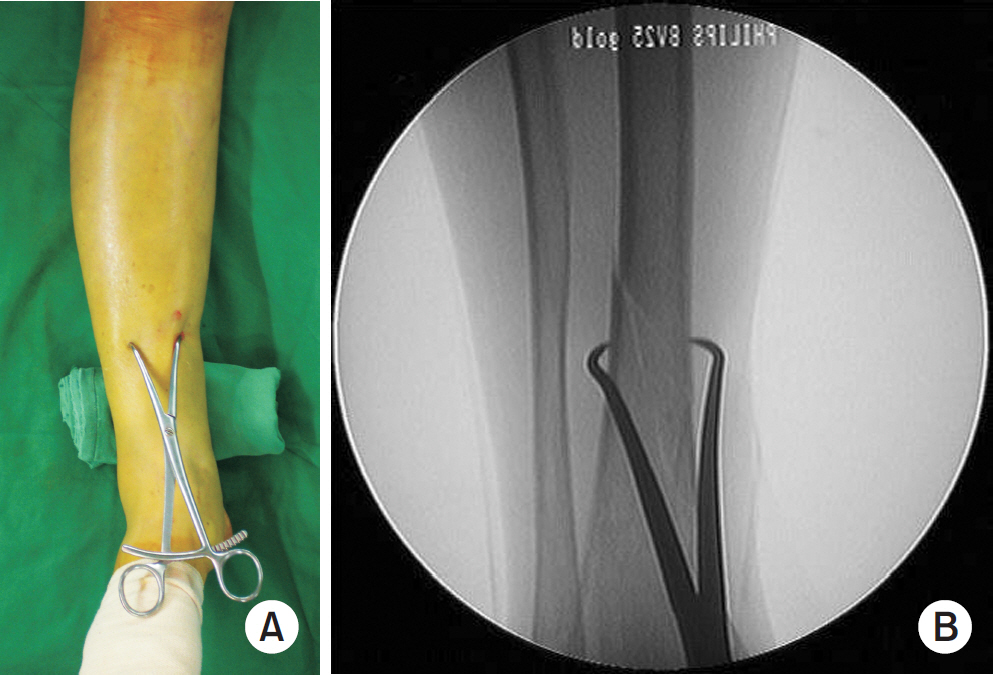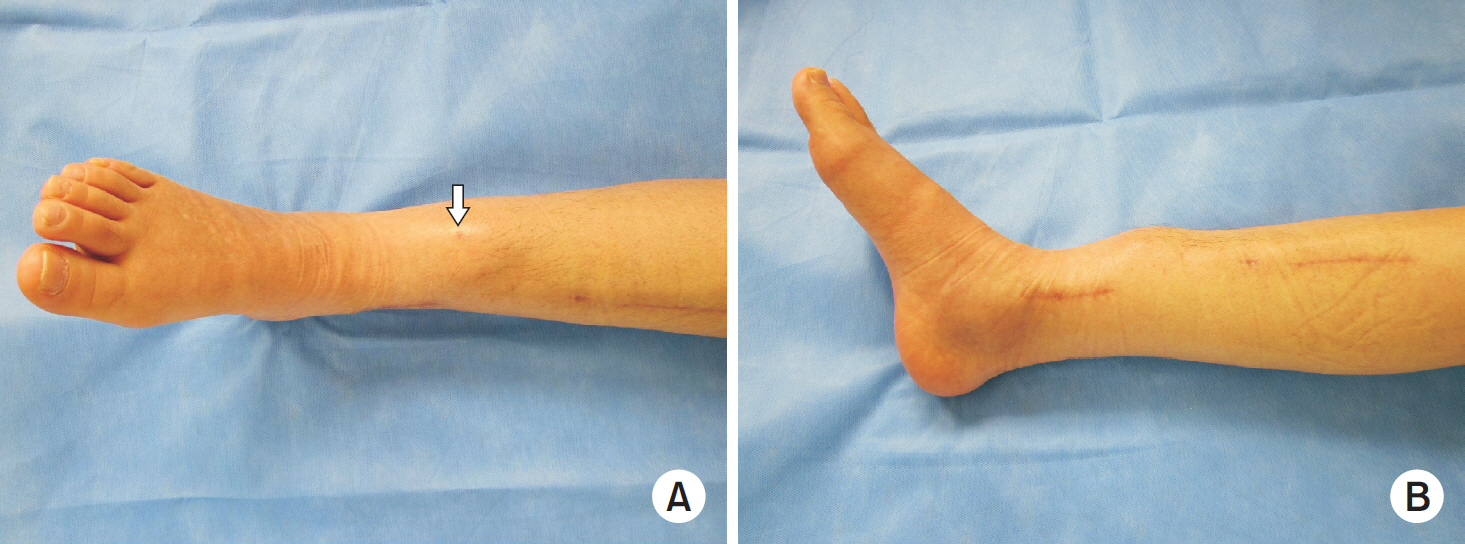J Korean Fract Soc.
2019 Jan;32(1):43-46. 10.12671/jkfs.2019.32.1.43.
Pseudoaneurysm of the Anterior Tibial Artery after Reduction with Pointed Bone Reduction Forceps on a Spiral Fracture of the Distal Tibia: A Case Report
- Affiliations
-
- 1Department of Orthopaedic Surgery, Daegu Fatima Hospital, Daegu, Korea. femur1973@gmail.com
- KMID: 2432497
- DOI: http://doi.org/10.12671/jkfs.2019.32.1.43
Abstract
- This paper reports a pseudoaneurysm of the anterior tibial artery after reduction with pointed bone reduction forceps on a spiral fracture of the distal tibia. Most reported injuries occurred at the proximal part of anterior tibial artery during drilling of the proximal tibia. To the best of the authors' knowledge, injury of the distal part of anterior tibial artery has never been reported. This paper describes a 54-year-old woman with a pseudoaneurysm of the anterior tibial artery clinically detected 11 weeks after the index surgery. This report highlights the need for surgeons to be aware of and careful about this complication during and after surgical intervention.
Keyword
MeSH Terms
Figure
Reference
-
References
1. Gahlot N, Kanojia RK. Anterior tibial artery pseudoaneurysm due to interlocking bolt of tibial nail: a case report and review. Acta Orthop Traumatol Turc. 51:77–83. 2017.
Article2. Dreyfus U, Fishman J. False aneurysm of the posterior tibial artery complicating fracture of the tibia and fibula. J Trauma. 20:186–187. 1980.
Article3. Han KJ, Won YY, Khang SY. Pseudoaneurysm after tibial nailing. Clin Orthop Relat Res. 418:209–212. 2004.
Article4. Sundararajan SR, Rajagopalakrishnan R, Rajasekaran S. Ruptured pseudoaneurysm of the lateral plantar artery after tibiotalocalcaneal fusion with retrograde nail-a rare complication. J Foot Ankle Surg. 57:393–395. 2018.
Article5. Hussain W, Balach T, Leland JM. Vascular injury involving proximal medial-to-lateral oblique locking screw insertion in tibial intramedullary nailing. Acta Orthop Belg. 77:414–418. 2011.6. Kim WY, Lee SW, Kim KS, Lee JY. Superior gluteal artery pseudoaneurysm caused by pelvic C-clamp blind application. Hip Pelvis. 29:145–149. 2017.7. Mróz I, Kielczewski S, Pawlicki D, et al. Blood vessels of the shin – anterior tibial artery – anatomy and embryology – own studies and review of the literature. Folia Med Cracov. 56:33–47. 2016.
- Full Text Links
- Actions
-
Cited
- CITED
-
- Close
- Share
- Similar articles
-
- Intramedullary Nailing of Distal Tibial Fractures with Percutaneous Reduction by Pointed Reduction Forceps
- Pseudoaneurysm of the Anterior Tibial Artery After Closed Intramedullary Nailing of a Tibial Shaft Fracture: A Case Report
- Calcified Anterior Tibial Artery Entrapment in Distal Third Tibial Fracture: A Case Report
- Traumatic Pseudoaneurysm of Posterior Tibial Artery in a Child: A Case Report
- Anatomically Percutaneous Wiring Reduction in Minimally Invasive Plate Osteosynthesis for Distal Tibial Fractures






